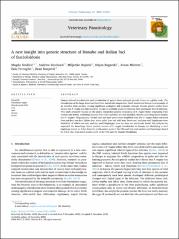| dc.description.abstract | Human induced translocation and introduction of species have reshaped parasite fauna on a global scale. The
introduction of the large American liver fluke Fascioloides magna from North America to Europe is an example of
an invasive alien parasite causing significant ecological and economic damage. Recent genetic studies have
shown that F. magna was introduced to Europe on multiple occasions forming three permanent foci of infection.
This study primarily focuses on the poorly researched genetic structuring of F. magna flukes originating from
Croatia and Serbia. Additional samples from USA and Italy are also included, thereby providing novel insights
into F. magna’s biogeography. Partial cox1 and nad1 genes were amplified from 216 F. magna flukes extracted
from red deer, roe deer, fallow deer, white-tailed deer and wild boar. Seven cox1 and nine nad1 haplotypes were
identified, of which two cox1 and four nad1 haplotypes have not been not previously found. Our analysis has
expanded the knowledge about possible sources of F. magna introduction to Europe, by identifying a cox1
haplotype shared by flukes from the north-eastern parts of the USA and Italy and another cox1 haplotype shared
by flukes also from north eastern parts of the USA and the Danube floodplains. | en_US |

